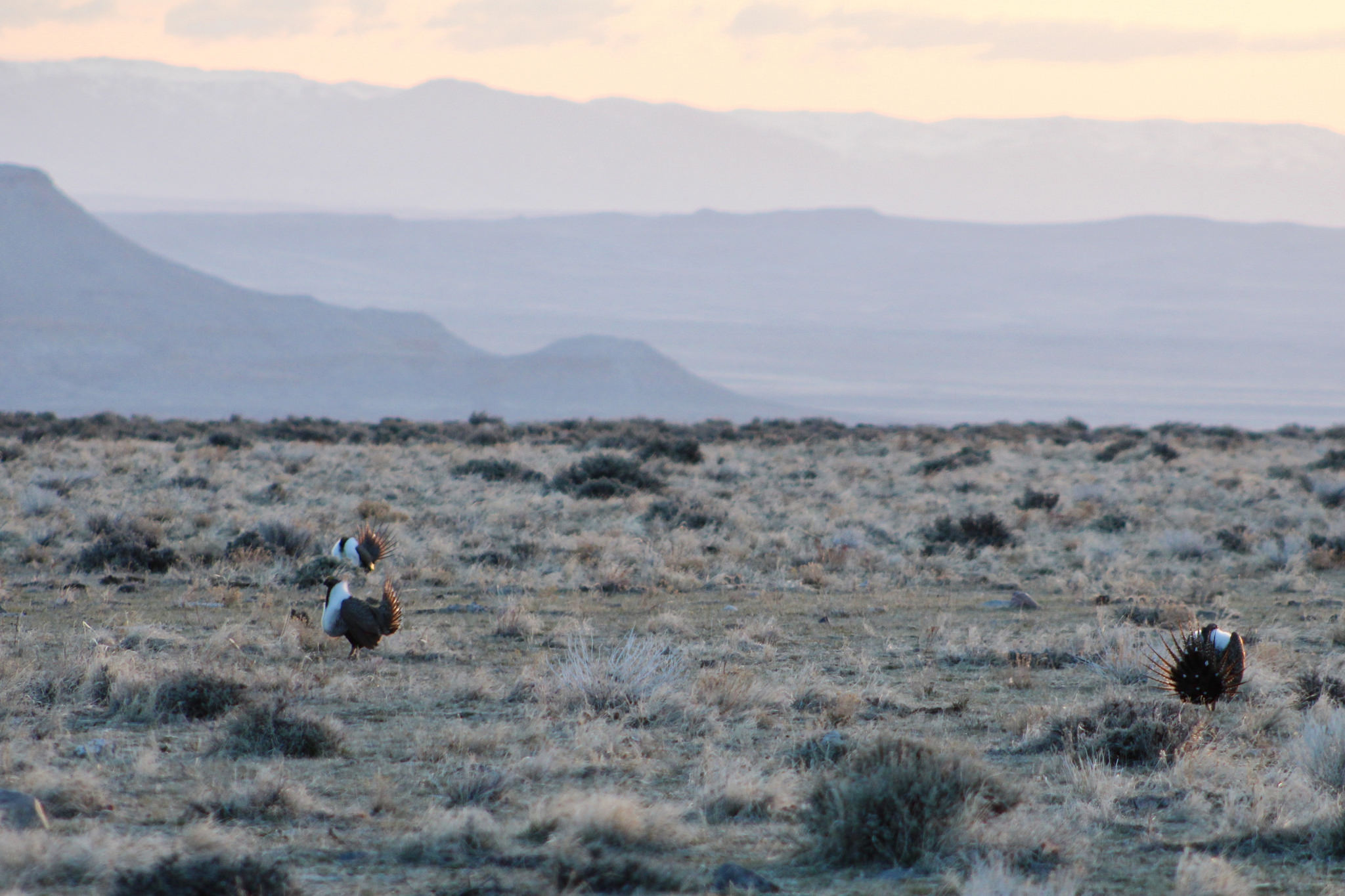The greater sage grouse, a ground-dwelling, chicken-sized bird found across 171 million acres in the western United States, is making headlines as a wide range of groups in the public and private sectors work to protect it. In recent years, the possibility of regulatory actions by the federal government aimed at protecting the species have many in the West worried about potential negative impacts to the region’s energy and agricultural industries.
But despite the spotlight on the sage grouse, there are widespread misconceptions about the species, leading to misguided conservation efforts, especially at the federal level. In particular, the federal government’s conservation strategy overlooks the critical role that private landowners play in determining the fate of the species.
The sage grouse is generally thought of as a federal land species because 64 percent of its habitat is on federal land. Yet private land is arguably the most important factor for sage grouse conservation. A 2014 study by federal and state biologists shows why. The study found as much as 81 percent of the moist habitat that sage grouse rely on for forage during the summer, such as streamsides and wet meadows, is privately owned. Indeed, the saying that “life follows water” in the West is as true for sage grouse as it is for any species.
“Wetlands are keystone features that structure [sage grouse] populations,” said Patrick Donnelly, a U.S. Fish and Wildlife Service biologist and lead author of the study. Sage grouse breeding sites, known as leks, are largely found on drier habitat, which is primarily federally owned. But Donnelly and his coauthors found that most leks are located within just a few miles of moist habitat, which is generally privately owned.
“How do you conserve grouse that split their time between private and public lands?”
“In other words, the scarcity of wet habitats in sagebrush ecosystems drive the location of grouse breeding sites on uplands: hens choose to mate and nest within a reasonable walk of where they can find late summer foraging for their broods,” according to a summary of the study by the U.S. Department of Agriculture’s Sage Grouse Initiative.
This has profound implications for sage grouse conservation. “How do you conserve grouse that split their time between private and public lands?” asks Donnelly. “With 81% of sparse summer habitat in private ownership, sage grouse success is inextricably linked to ranching and farming in the West.” Despite the importance of moist habitat for sage grouse, federal conservation efforts, led by the Interior Department, focus almost exclusively on lek locations on drier lands.
There is a need for a shift to a “wetland-centric” focus for sage grouse conservation, and that means working with the ranchers and farmers who own the vast majority of this habitat. These landowners are best positioned to conserve the species on private lands, as well as approximately 100 million acres of federally owned sage grouse habitat on which they graze livestock, making them by far the greatest potential conservation force for the species.
Sage grouse conservation requires active management, such as monitoring, controlling invasive species, and maintaining wet habitat. Due to the importance of both private and public lands, the species needs a cooperative “all-lands” approach that encourages participation by landowners. This is already happening through state-led partnerships that include landowners, counties, energy companies, conservation groups, universities, and the federal Sage Grouse Initiative. The success of this approach is part of the reason that greater sage grouse populations have been stable or increasing over the last decade.
Unfortunately, this conservation approach, which has proven successful, is in jeopardy as the federal government pursues a top-down, penalty-based approach focused on federal lands and regulations that will likely negatively impact private landowners. In September, the Interior Department decided not to propose listing the grouse under the Endangered Species Act, which is good news because the punitive approach of the law can create perverse incentives for landowners to make their property inhospitable to endangered species. Instead, the Interior Department promulgated fifteen amended federal land-use plans which set aside 72.8 million acres of federal lands as sage grouse habitat subject to restrictions on grazing and other land uses.
Pushing ranchers off federal lands is likely to have unintended negative consequences for sage grouse conservation. “The failure of a national strategy to recognize sage grouse dependence on private lands may result in regulations which ultimately increase sage grouse habitat loss and fragmentation on private lands if landowners are forced to intensify management actions to offset lost revenues from public grazing allotments,” according to comments filed by Utah over the state’s amended federal plan. Moreover, the Interior Department’s top-down, unilateral approach creates mistrust and disrupts existing partnerships.
As the state-led approach demonstrates, landowners are often willing to pitch in to help the species, so long as they are not punished. Although the sage grouse has become a hot-button political issue, there needs to be a fundamental reorientation of sage grouse conservation efforts, especially among federal agencies, reflecting the reality that private landowners are key to conserving this iconic species.




